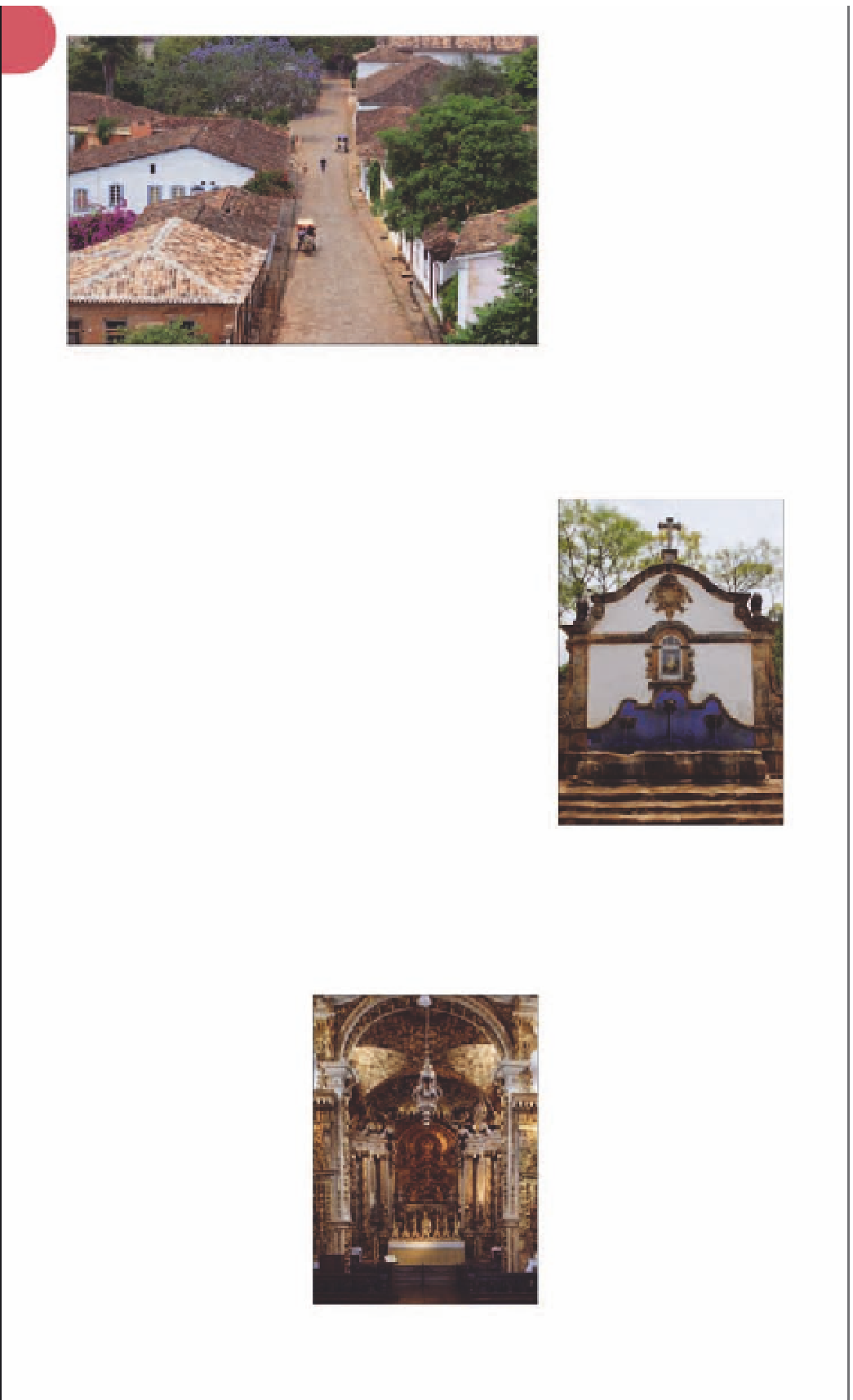Travel Reference
In-Depth Information
Tiradentes has a magnificent
18th-century public fountain,
the
Chafariz de São José
,
just across from Rua da
Camara. It features an oratory
with an image of São Jose
de Botas and three faces
representing love, good
fortune, and health. The
water comes from a spring
in the São José hills over-
looking the town, which
offer excellent hiking.
R
Matriz de Santo Antônio
Rua da Camara.
#
8am-5pm
daily.
Dec-Mar: 8pm Fri
& Sun, 8:30pm Sat (sound & light
show).
E
&
^
8
Colonial Portuguese houses lining the cobbled streets of Tiradentes
Tiradentes
7
*
important of these is Rua da
Câmara, whose steep cobbles
rise to the town's most impos-
ing church, the
Matriz de
Santo Antônio
, built between
1710 and 1752. This is one of
the finest Baroque churches
in Brazil, with wonderful
woodcarvings and gilt interiors.
Parts of the façade are
attributed to the architect and
sculptor Aleijadinho
(see p131)
.
The
Museu Padre Toledo
,
just east of the Matriz on the
street by the same name, is
the former house of another
martyr from the Inconfidência,
Padre Toledo. It is now a
museum preserving art,
documents, and furniture
from the 18th century.
There are various other
small churches scattered
throughout the town and
these are all worth a visit. The
best of these churches is
Igreja Nossa Senhora do
Rosário dos Prestos
, on Rua
Direita, which features
some elegant statues and
painted panels.
Museu Padre Toledo
Rua Pedro Toledo.
Tel
(032) 3355
1549.
#
9am-4pm Tue-Sun.
&
Largo dos Forros,
Rua Resende Costa 71, (032) 3355
1212.
6,000.
@
n
^
Festival de Cinema (Jan),
Carnaval Mardi Gras (Feb/Mar).
_
Like Ouro Preto and Mariana,
Tiradentes became rich on
gold, producing some of the
most lavish Baroque church
interiors and façades in all of
Brazil. The town takes its
name from the nickname
“Tiradentes” (Tooth-puller) of
José da Silva Xavier (1746-
92), an erstwhile resident
who became a martyr of the
Inconfidência Mineria, the first
movement in Brazil towards
independence from Portugal.
Tiradentes is a delightful
colonial town. Its multi-
colored Portuguese cottages
and miniature Baroque
churches flank the cobbled
roads on the steep, low São
José hills around the Rio
Santo Antônio. There is a craft
shop, an arty little café or
gourmet restaurant on every
other corner. Pretty horse-
drawn carriages gather in
Largo das Forras, the town's
main plaza, and a narrow
gauge steam train, Maria
Fumaça
(see p440)
, with
wooden Pullman coaches,
puffs and heaves its way to
and from neighboring São
João del Rei on weekends
and public holidays.
The center of Tiradentes is
tiny and best seen on foot.
Rua da Praia runs west from
Largo das Forras following the
course of the Rio das Mortes.
Rua Direita runs parallel to it
and a series of smaller streets
cross the two. The most
Chafariz de São José, an 18th-
century fountain in Tiradentes
São João del Rei
8
*
Maria Fumaça (only
between São João del Rei &
Tiradentes). Fri, Sat, Sun & public
hols, (032) 3371 8485.
79,000.
£
@
from
Tiradentes.
Rua Padre José Maria,
Praça Frei Orlando (032) 3372 7338.
_
n
Carnaval Mardi Gras (Feb),
Semana de Inconfidência (Apr).
www
.saojoaodelreisite.com.br
The largest of the historic
towns of Minas Gerais, São
João del Rei did not suffer
from the decline of the gold
boom in the 1800s. Today, it
remains a bustling town, less
than 19 miles (30 km) from
Tiradentes, and boasts some
beautiful churches, old
mansions, and an attractive
colonial center.
Gilt altar and interior of Matriz de
Santo Antônio, Tiradentes
For hotels and restaurants in this region see pp372-3 and pp398-9





































